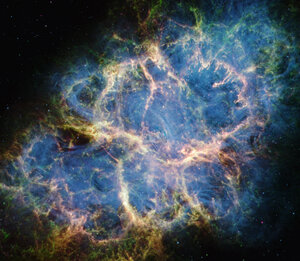Accept all cookies Accept only essential cookies See our Cookie Notice

About ESA
The European Space Agency (ESA) is Europe’s gateway to space. Its mission is to shape the development of Europe’s space capability and ensure that investment in space continues to deliver benefits to the citizens of Europe and the world.
Highlights
ESA - United space in Europe
This is ESA ESA facts Member States & Cooperating States Funding Director General Top management For Member State Delegations European vision European Space Policy ESA & EU Space Councils Responsibility & Sustainability Annual Report Calendar of meetings Corporate newsEstablishments & sites
ESA Headquarters ESA ESTEC ESA ESOC ESA ESRIN ESA EAC ESA ESAC Europe's Spaceport ESA ESEC ESA ECSAT Brussels Office Washington OfficeWorking with ESA
Business with ESA ESA Commercialisation Gateway Law at ESA Careers Cyber resilience at ESA IT at ESA Newsroom Partnerships Merchandising Licence Education Open Space Innovation Platform Integrity and Reporting Administrative Tribunal Health and SafetyMore about ESA
History ESA Historical Archives Exhibitions Publications Art & Culture ESA Merchandise Kids Diversity ESA Brand Centre ESA ChampionsLatest
Space in Member States
Find out more about space activities in our 23 Member States, and understand how ESA works together with their national agencies, institutions and organisations.
Science & Exploration
Exploring our Solar System and unlocking the secrets of the Universe
Go to topicAstronauts
Missions
Juice Euclid Webb Solar Orbiter BepiColombo Gaia ExoMars Cheops Exoplanet missions More missionsActivities
International Space Station Orion service module Gateway Concordia Caves & Pangaea BenefitsLatest
Space Safety
Protecting life and infrastructure on Earth and in orbit
Go to topicAsteroids
Asteroids and Planetary Defence Asteroid danger explained Flyeye telescope: asteroid detection Hera mission: asteroid deflection Near-Earth Object Coordination CentreSpace junk
About space debris Space debris by the numbers Space Environment Report In space refuelling, refurbishing and removingSafety from space
Clean Space ecodesign Zero Debris Technologies Space for Earth Supporting Sustainable DevelopmentLatest
Applications
Using space to benefit citizens and meet future challenges on Earth
Go to topicObserving the Earth
Observing the Earth Future EO Copernicus Meteorology Space for our climate Satellite missionsCommercialisation
ESA Commercialisation Gateway Open Space Innovation Platform Business Incubation ESA Space SolutionsLatest
Enabling & Support
Making space accessible and developing the technologies for the future
Go to topicBuilding missions
Space Engineering and Technology Test centre Laboratories Concurrent Design Facility Preparing for the future Shaping the Future Discovery and Preparation Advanced Concepts TeamSpace transportation
Space Transportation Ariane Vega Space Rider Future space transportation Boost! Europe's Spaceport Launches from Europe's Spaceport from 2012Latest

Supernovas blast iron into interstellar space
Thank you for liking
You have already liked this page, you can only like it once!
Supernova explosions are a crucial step in the chain of events that generates the iron we find in interstellar space and in the Solar System, including on Earth.
Iron is formed via nuclear fusion in the cores of stars that are eight times more massive than our Sun.
The life of a massive star takes a different course from that of lower-mass stars. Only in a massive star is the weight of the outer layers sufficient to fuse nuclei of lighter elements into iron ones. Because of its huge mass, the inward gravitational pressure in a massive star’s interior causes a chain of nuclear reactions that, starting from hydrogen, ultimately leads to the formation of iron.
When the nuclear fuel eventually runs out, the core of a massive star collapses violently, while its outer shells are blasted away with monstruous energy in what we call a ‘supernova explosion’.
In this way, a huge amount of material rich in dust and heavy metals, including iron, is blown out into interstellar space.
Our Solar System formed from the collapse of a cloud of dust and gas enriched by material from supernova explosions. Swirling in a disc around our infant star, the material containing heavy elements gradually clumped together into the planets. Oxygen, silicon, aluminium and iron ended up as the main ingredients of Earth’s crust.
Iron on Earth was captured by the cells of living organisms, such as our blood cells that use it to transport oxygen. Iron, a vital ingredient of our blood, was minted in massive stars.
[Image description: The image shows an infographic organised into six parts, numbered one to six. On a black background, we have: 1. a yellow-gold ball with interior shells; 2. a violent explosion, bright white at the centre and yellow-gold-orange at its periphery; 3. blue atoms floating in space; 4. and 5. an orange-gold disc of gas, pebbles and round grey-brown balls swirling around a source of very bright light; 6. a petri dish with red blood cells that look like round and flat jelly sweets.]
-
CREDIT
ESA -
ACKNOWLEDGEMENTS
ATG Europe -
LICENCE
CC BY-SA 3.0 IGO or ESA Standard Licence
(content can be used under either licence)

Scorching hot iron within supernova remnant N132D

The twisted shockwaves of an exploded star

Spectrum of supernova remnant N132D

Investigating the origins of the Crab Nebula with Webb















 Germany
Germany
 Austria
Austria
 Belgium
Belgium
 Denmark
Denmark
 Spain
Spain
 Estonia
Estonia
 Finland
Finland
 France
France
 Greece
Greece
 Hungary
Hungary
 Ireland
Ireland
 Italy
Italy
 Luxembourg
Luxembourg
 Norway
Norway
 The Netherlands
The Netherlands
 Poland
Poland
 Portugal
Portugal
 Czechia
Czechia
 Romania
Romania
 United Kingdom
United Kingdom
 Slovenia
Slovenia
 Sweden
Sweden
 Switzerland
Switzerland
























